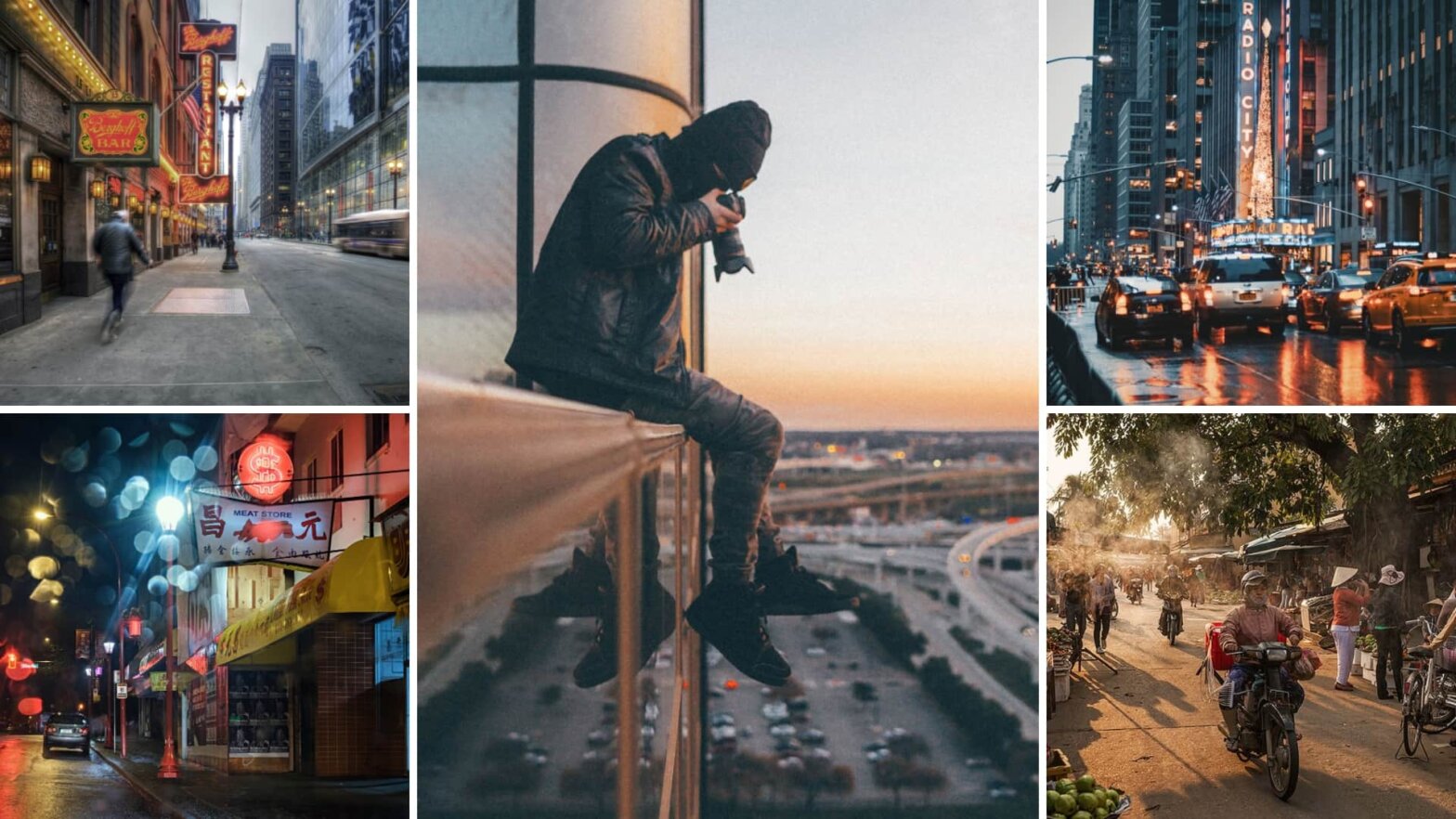There is a case to be made about the allure of honesty and art. Perhaps this is the biggest argument for the growing popularity of street photography. On one side of the photography coin you have controlled, polished, studio photography that is artistic and moving in its own right. On the other side of that coin is street photography. What is street photography, what defines it, why are people drawn to it, and how can you capture it yourself? Let’s find out.
What is Street Photography
First, let’s define street photography
Street photography can often be a vague term. To better distinguish it from other practices of photography, let’s take a look at the street photography definition. For more, check out our index of art styles covering more specific and noteworthy movements.
STREET PHOTOGRAPHY DEFINITION
What is street photography?
Street photography is a photographic practice of shooting people in everyday life in everyday environments. These photographers commonly aim to capture spontaneous moments of people in a candid state. Street photography is typically not directed or staged. Rather, it is unmediated and spontaneous as to capture subjects in their most authentic state. Despite the term, street photography is not limited to busy cities or rural areas. This types of photography can be taken anywhere that sparks your curiosity.
Elements of street photography:
- Spontaneity
- Juxtaposition
- Humor
- Authenticity
How to Shoot Street Photography
Street photography code of conduct
There are implications to capturing candid photos. The essence of street photography is authenticity and rawness. So many street photographers often avoid asking permission to take someone's photo before they hit the shutter.
First and foremost, check the laws where you are shooting. Within the United States and Canada, taking and using photographs of a person without their permission is completely legal unless it is for commercial use. Here is a great video by Sean Tucker having a conversation with an actual legal team about the laws and logistics of street photography.
Law and Ethics • How to shoot street photography
That being said, there are certain ethics to this type of photography. You may be confronted with the notorious question, “Why did you take my photo?”
When faced with this question it is important to be honest and direct. Reassure them that you are a street photographer following your curiosity and that they should take this as a compliment.
Some photographers even offer to share contact info to share the photo once it is developed. It is also a great idea to have a portfolio ready to show them. Above all, be kind and be courteous. Taking street photography requires courage and honesty so get used to being confronted about your work.
Related Posts
Street Photography Ideas
What to shoot
What makes good street photography? It can often be a vague genre that is dependent on where you live or where you are shooting. However, no matter the location, there are a few general characteristics most street photographers develop an eye for.
1. Juxtaposition
Photography is a medium through which stories and meaning can be communicated through a single image. Juxtaposition is one of the most effective tools photographers have for achieving this.
Think of how this concept applies to the image below.
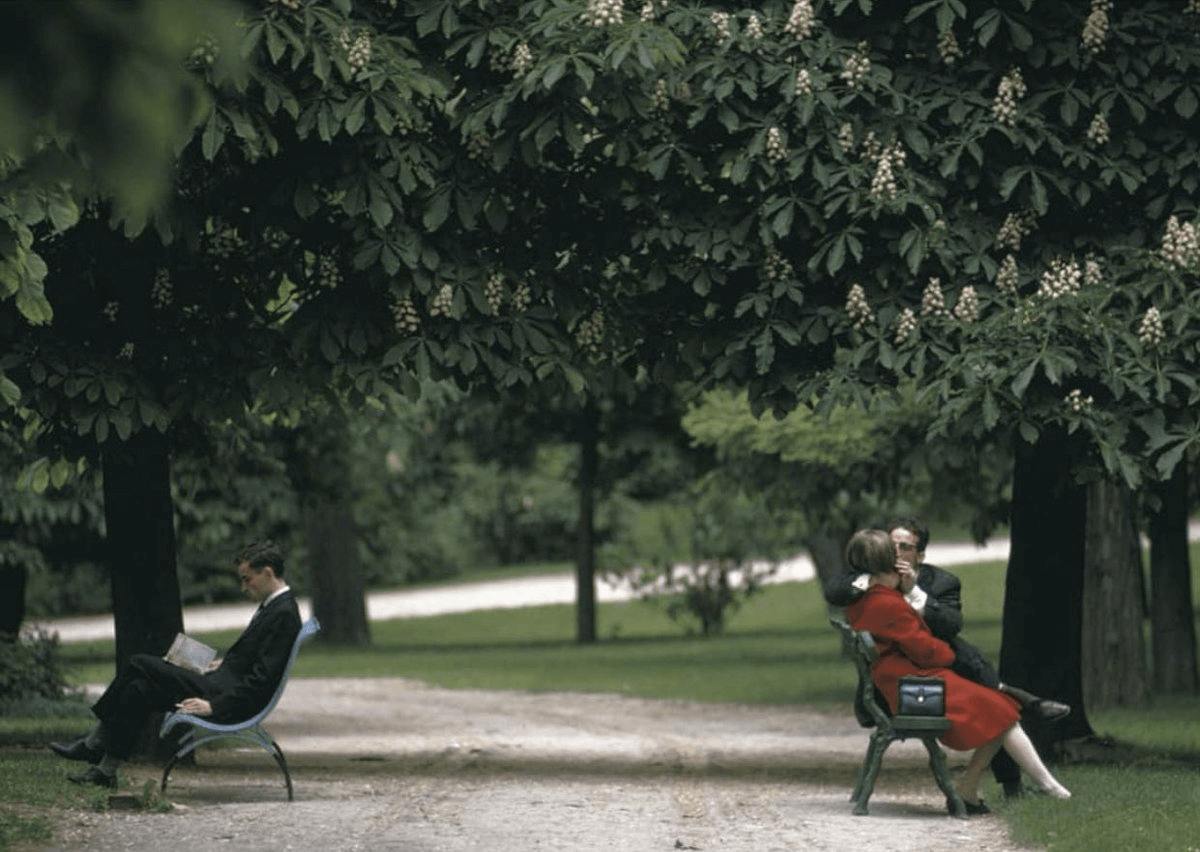
Street photography examples • photo by Joel Meyerowitz
Finding naturally occurring juxtaposition can create meaning within a single image. And meaning is what most viewers are drawn to. Framing two unlike things within the same frame or drawing similarities or differences between subjects can create a captivating photograph.
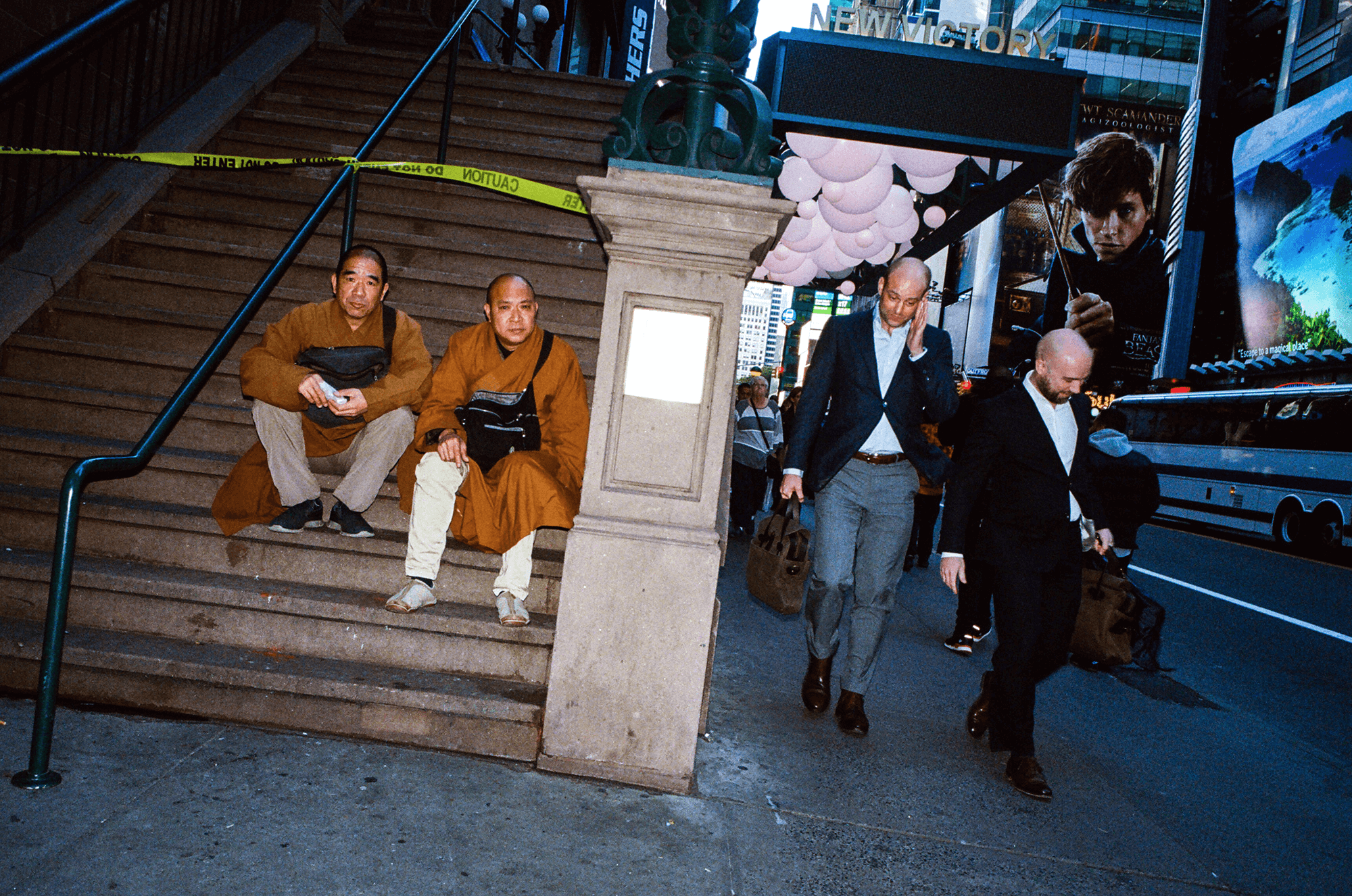
Street photography examples • photo by Daniel Arnold
2. Emotions and reactions
Like we mentioned earlier, a key characteristic of street photography is authenticity. It is an opportunity to capture people in their most honest state.
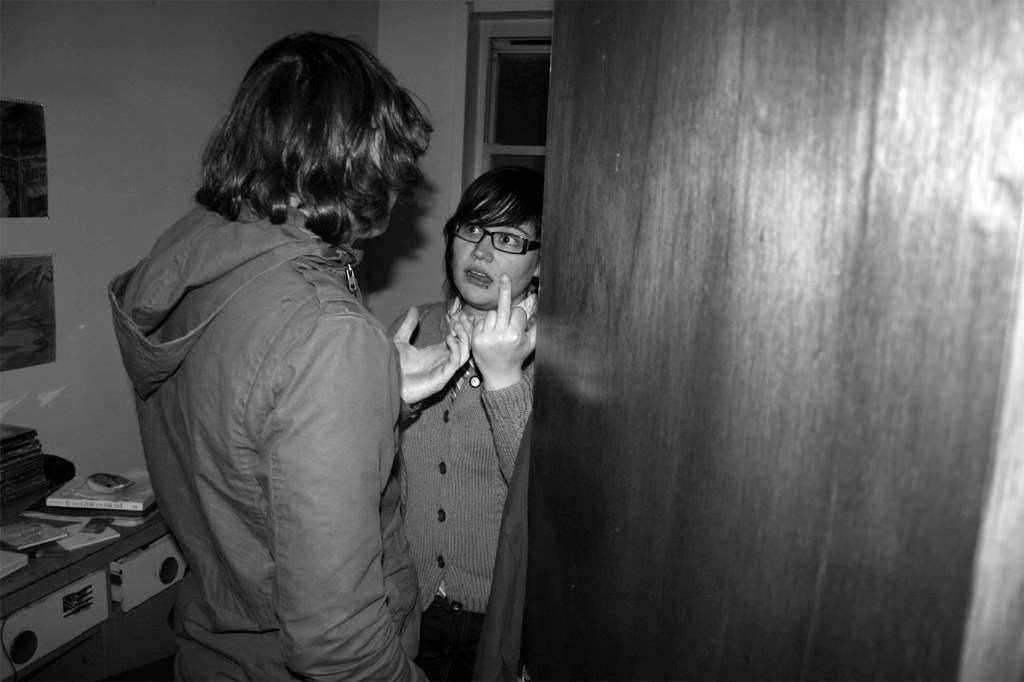
Reactions in street photography ideas • photo by Daniel Arnold
Look for emotions in the people around you and be quick to capture them. You’ll often find these in reactions to events or altercations. But it is also a matter of being at the right place at the right time. These emotions can connect people to an image and tell a story.
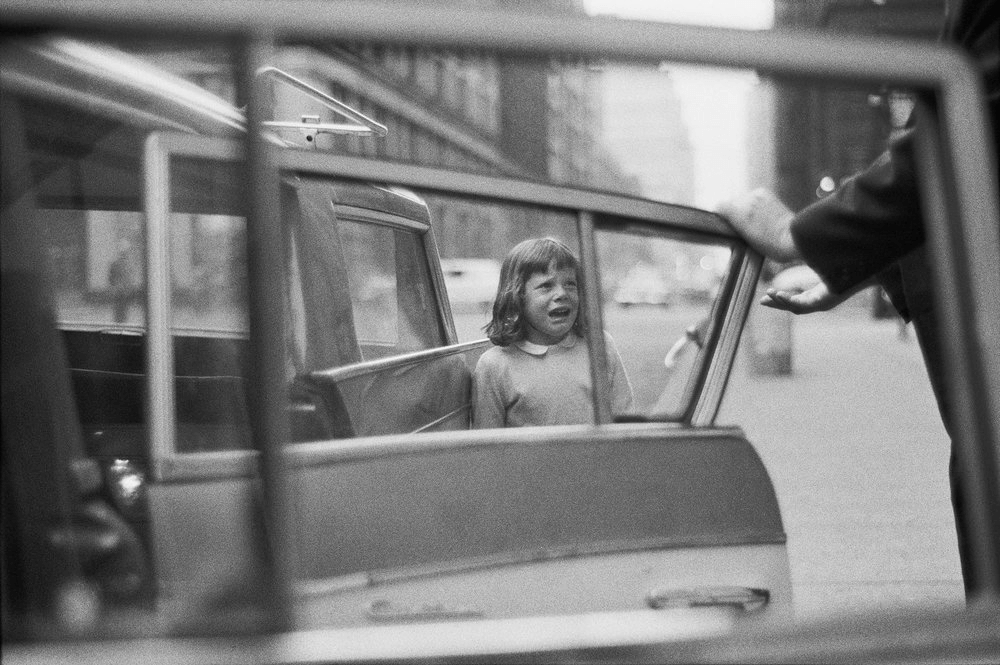
Emotion in street photography ideas • photo by Joel Meyerowitz
3. Action
Incorporating action into a photograph imbues it with life. Capturing people midaction can tell a complete story in a still image. One of the benefits of street photography is that there is a higher priority on content than technique. When you see action you feel is worth capturing, point and shoot to get the shot.
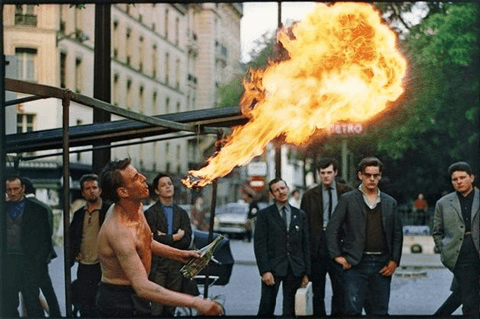
Action: street photography ideas • photo by Joel Meyerowitz
4. Funny and weird
They say that life can be stranger than fiction. Some of the best street photographers have an eye to capture these moments. Sometimes they only last for a few seconds, so being present and trusting your instincts as to when something is strange or funny will help you capture these moments.
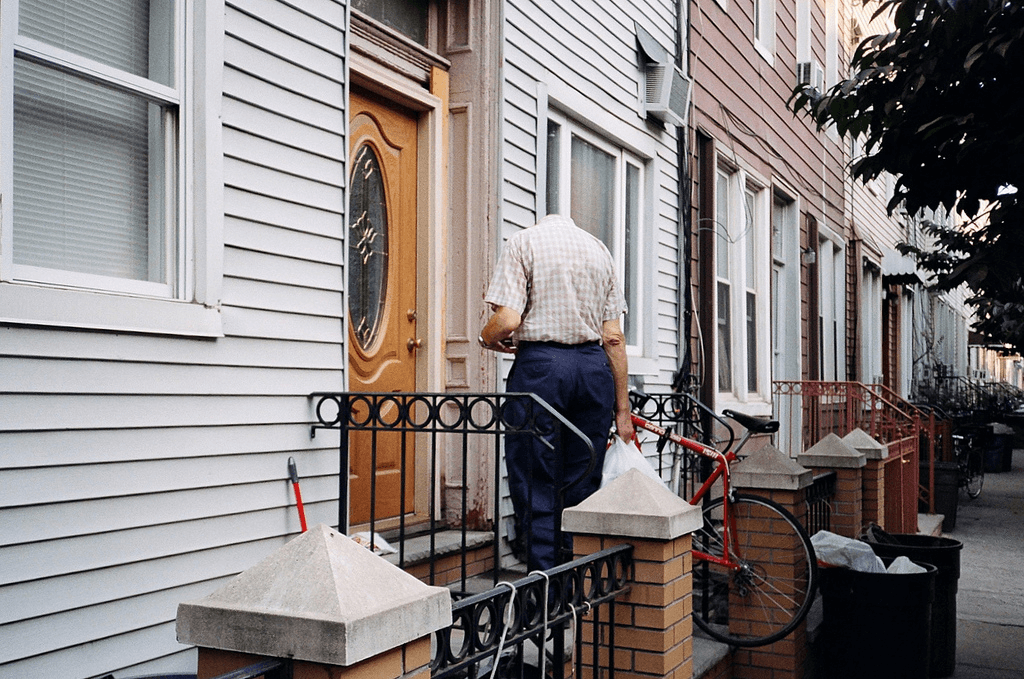
Creative street photography • photo by Daniel Arnold
Understanding what you’re looking for when shooting street photography takes a bit of practice. The best way to practice is to go out and shoot and develop your eye. So let’s take a look at typical street photography equipment that will get you started.
How to Become a Street Photographer
Choose your equipment
There are no preset rules or guidelines to the best street photography camera. However there are a couple things to keep in mind when it comes to equipment due to the nature of this particular style of photography.
Street Photography Camera
Most photographers opt for DSLR cameras or mirrorless cameras. The good thing about these is they are quick to shoot, cheaper to take a photo (than film), and can take hundreds even thousands of photos with just a few SD cards.
The downside is that digital cameras are often big and can be counterproductive. After all, you’re not the paparazzi.
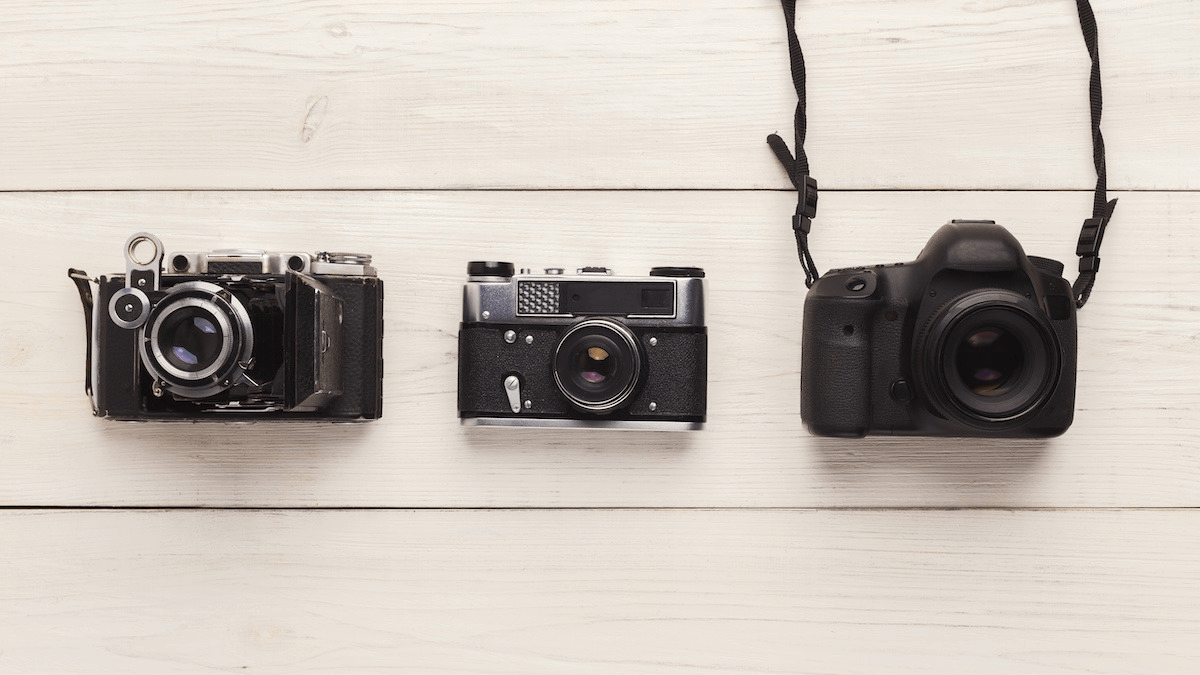
Street photography equipment: Film vs Digital
Many photographers opt for smaller, film cameras for their street photography camera. Firstly, film produces a unique aesthetic in photography that can appear less polished — a look that complements street photography.
The downside is that film can be incredibly expensive. Choose your camera based on your budget, style, and whatever will get you shooting the quickest.
Lens
Among the seemingly infinite types of lenses to choose from, you’ll most likely want to use a prime lens. They’re a lot smaller than zoom lenses. You’ll also get used to using the same focal length over time. This allows you to be lighter on your feet and to shoot from the hip.
For a refresher on the differences between prime lenses, zoom lenses, and different focal lengths, check out our camera lens breakdown below.
Every Type of Camera Lens Explained • Subscribe on YouTube
Whether you do choose to use a prime or zoom lens it’s important to bring just one lens. The last thing you want to worry about is changing your lens to get a shot — you might miss the moment entirely. Here’s a video by Evan Ranft as to why one lens works best for street photography.
Street Photography Hacks (to help you get started)
Shooting a bit wide at 35mm or 24mm will allow you to get close to subjects, but also shoot entire scenes. If you are just getting started and you are anxious about getting close to the subject, normal or telephoto lenses like a 50mm or 75mm will allow you to shoot from further away.
If any of this sounds intimidating or too expensive, use whatever camera you have. In fact, a growing trend in street photography is camera phone street photography. The entire practice of street photography is based on the act of going out and shooting no matter what.
Related Posts
Types of Street Photography
How to shoot street photography
Going out and shooting is the best way to develop your eye and gain experience capturing street photography. But here are a few general tips to hitting the streets and shooting.
Trust your instincts
Above all, trusting your instincts when something is worth shooting is paramount. Things happen fast in everyday life. Listening to your gut and hitting the shutter without thinking too much is key to getting great photos.
Walk everywhere
Most street photographers spend their day simply walking the streets and being attentive. You’ll often find some of the best subject matter to shoot when you have no specific destination. You’ll also find the most spontaneous moments to shoot when you yourself are spontaneously walking.
Take a look at this video by Vogue of a day in the life of street photographer Daniel Arnold. It will give you an insight as to how little preparation goes into street photography, but how walking and instincts results in great photos.
Daniel Arnold • Street Photography
Get close
Famed journalistic photographer Robert Capa once said, “If it’s not good enough, you’re not close enough.” This couldn’t be more true for street photography.
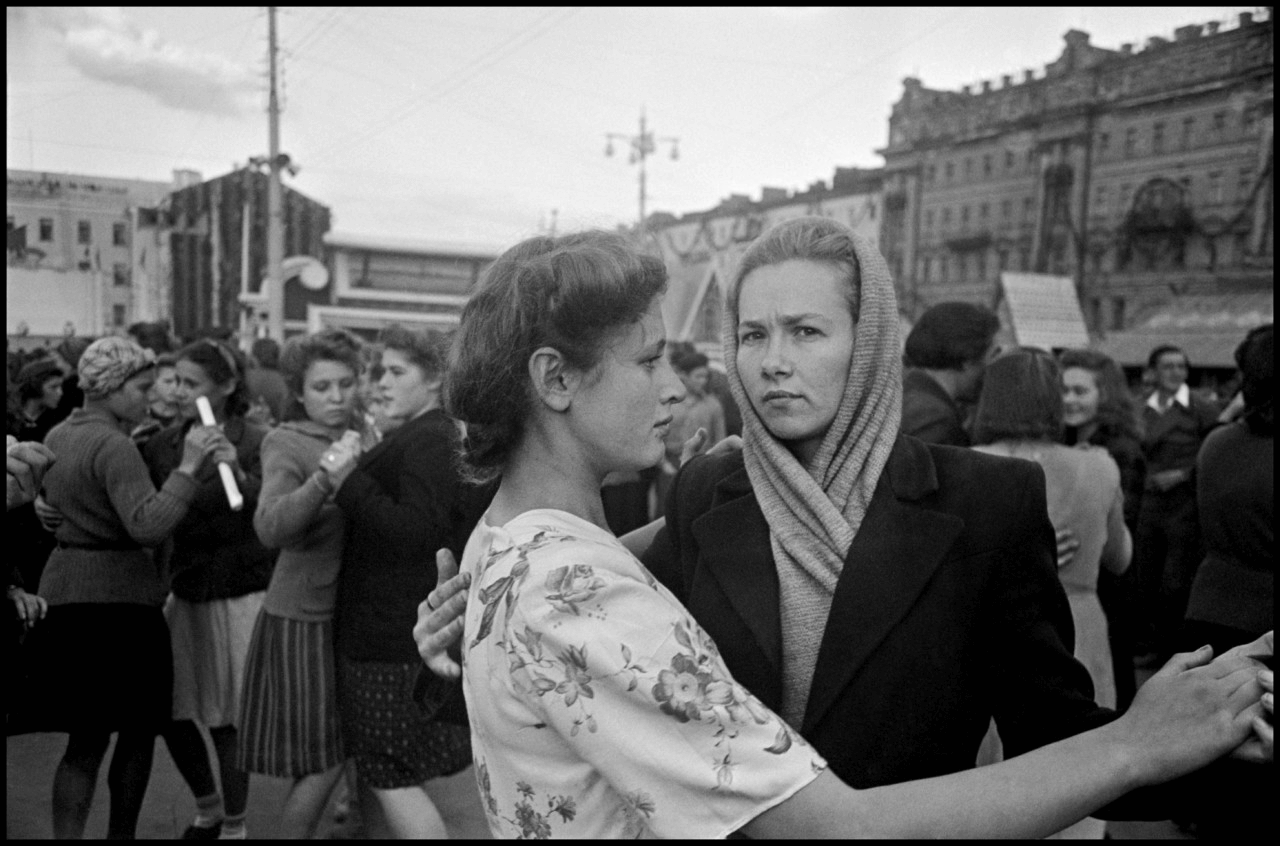
What is street photography: Robert Capa Moscow, Former USSR, 1947
While it may seem intimidating to get close, find means of getting there and be prepared to talk to your subjects openly and honestly. This next tip will also help you get even closer.
Don’t be afraid to shoot from the hip
One of the most intimidating aspects of street photography is taking a stranger’s photo without permission. A way to overcome this is to shoot from the hip or without looking through the viewfinder.

Vivian Maier • Self portrait shooting from the hip
This is especially convenient when using wide angle lenses on auto settings. This way, you'll be more likely to capture your subject without looking through the viewfinder. Shooting from the hip will get you closer and draw less attention to yourself as a photographer.
Blend in
Like we mentioned earlier, you are not the paparazzi. Do your best to blend into your environment and not draw attention to yourself. Not only will you be less invasive, but you’ll be able to get close to your subjects and the action.
Enjoy the process
Lastly, the most important part of all artistic mediums is to enjoy the process. This means following your curiosities and shooting what you are happy to shoot. Absolutely challenge and push yourself, but enjoy doing so.
This may mean talking to your subjects if that brings you joy. Or simply using the photographic medium as your voice and mode of expression. Enjoying the process will inevitably get you out shooting more often and help you become a better photographer.
Up Next
A guide to different types of cameras
Street photography is one of the easiest types of photography to get started on because all you really need is a camera. If you’re still wondering which camera will be best for you, check out our next article. We dive into the different types of cameras from film or digital to compact cameras and their pros and cons.
Up Next: Types of Cameras →
Showcase your vision with elegant shot lists and storyboards.
Create robust and customizable shot lists. Upload images to make storyboards and slideshows.
